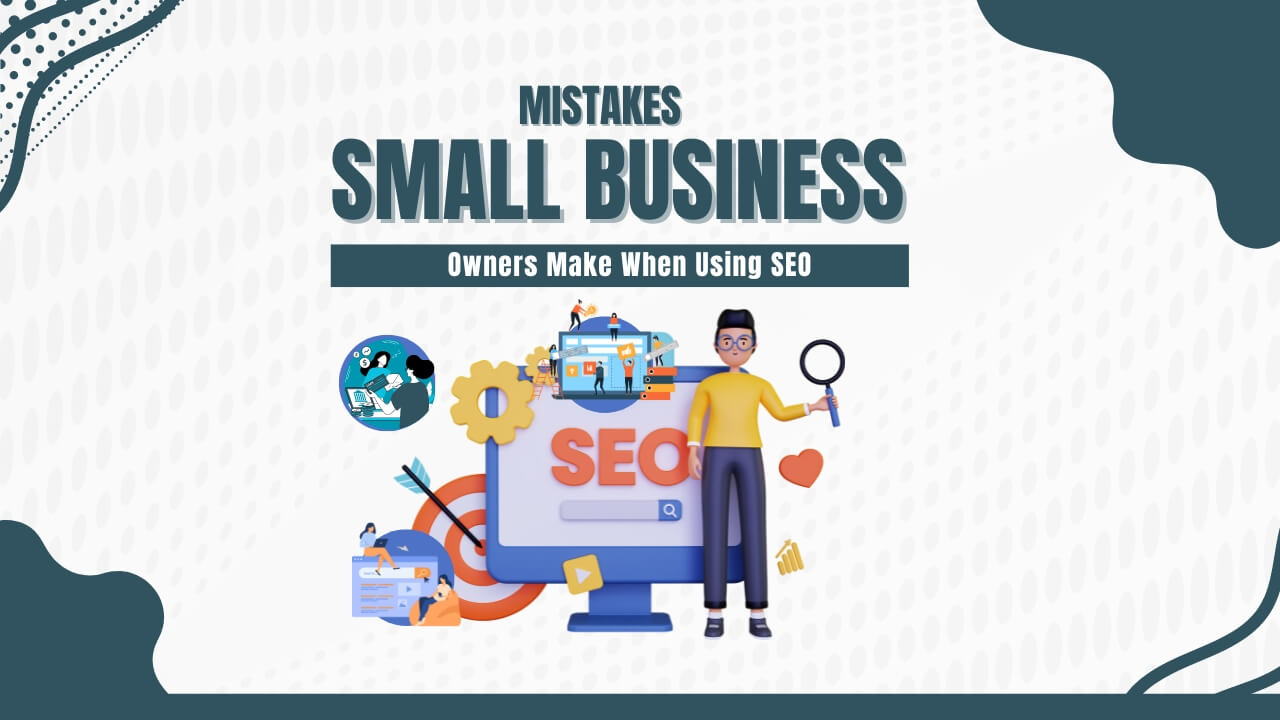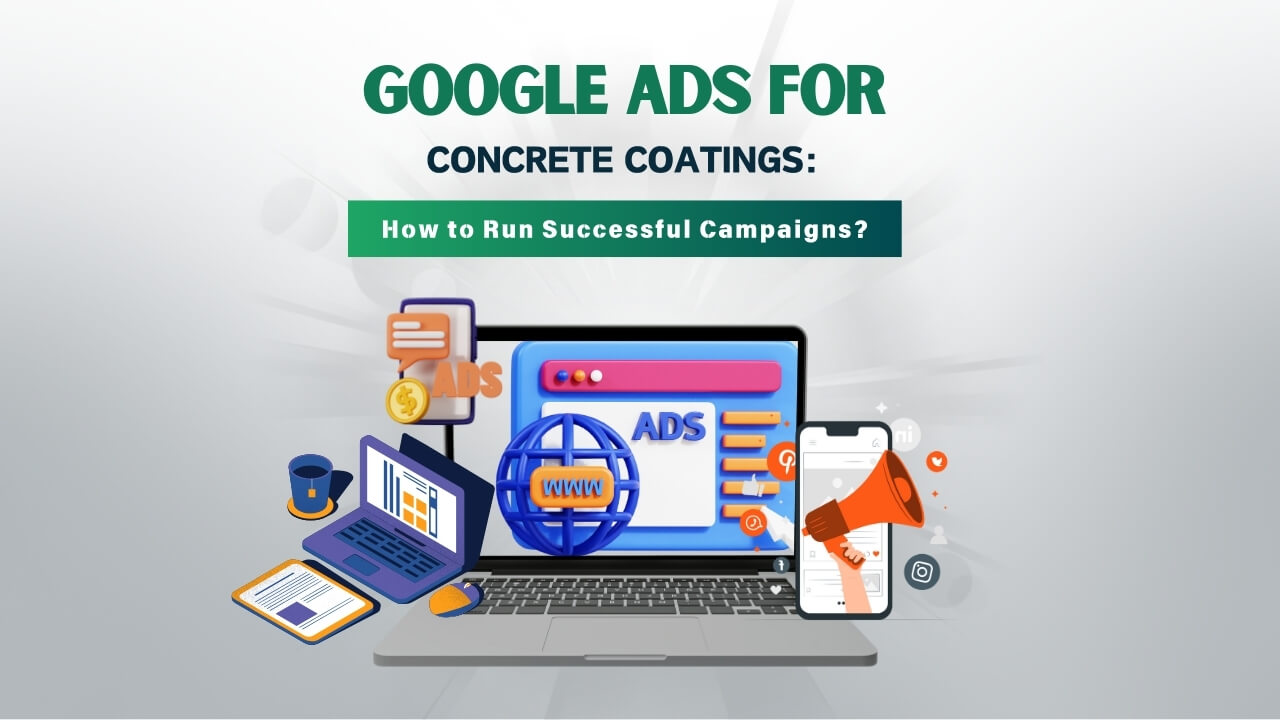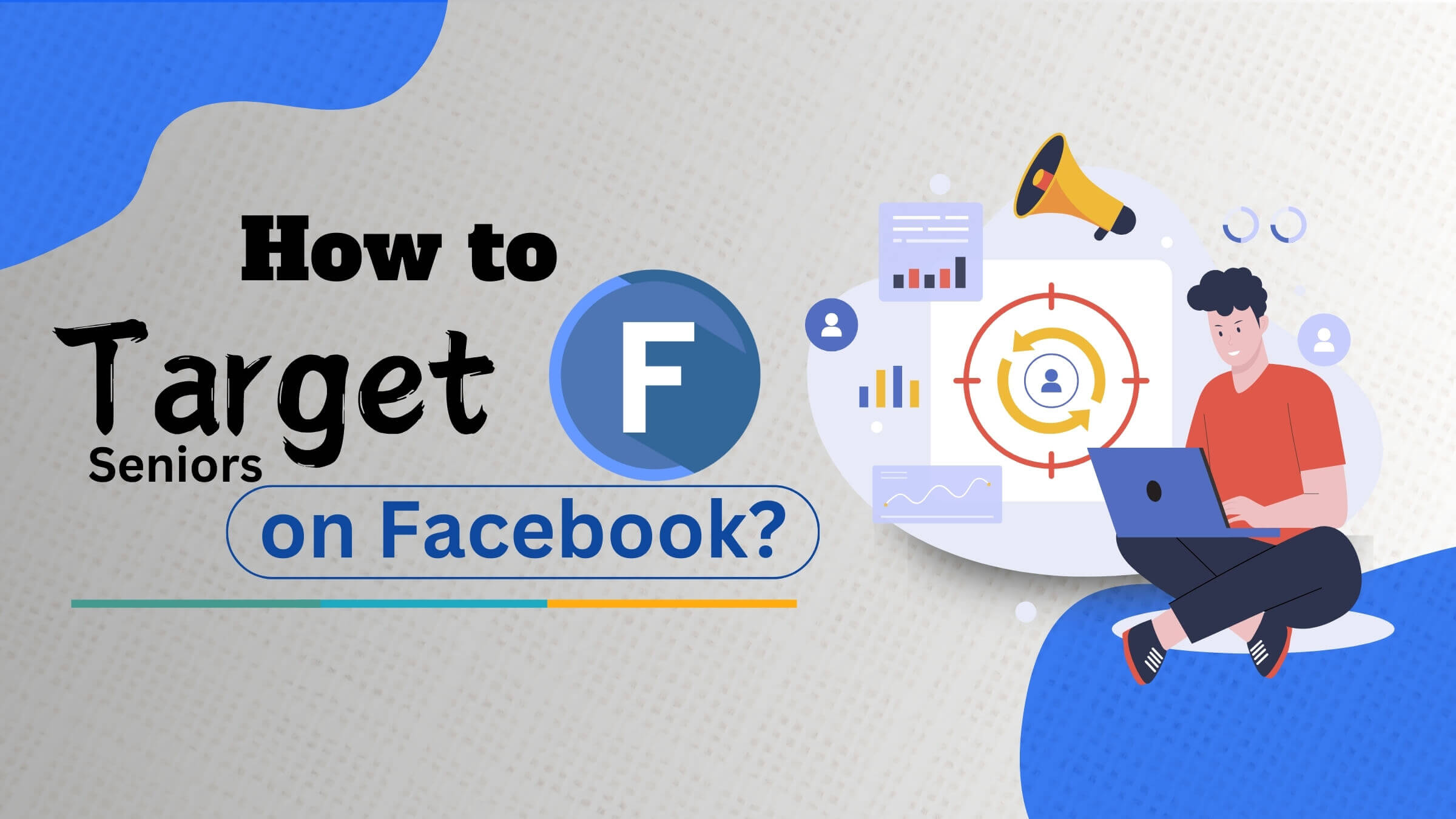In this digital era, programmatic advertising is one of the most effective tools for small businesses who are actively searching for their targeted audience. This innovative approach of advertising provides various opportunities for businesses of all sizes to effectively optimize their ad campaigns, increase efficiency, and drive impactful results.
Well further in this blog we will be looking into the intricacies of programmatic advertising, shedding light on what it entails, its myriad benefits, and how small businesses can effectively take the advantage of its potential to achieve their marketing objectives.
By effectively understanding the fundamentals of programmatic advertising you can easily unlock its capabilities, Further in this blog we will be providing actionable insights, strategy and also some tips ,to tailor your small businesses.
So Stay tuned With Sujit Shukla, as I and you together begin the journey to uncover the transformative power of programmatic advertising helping small businesses by sharing the knowledge and tools needed to thrive in today’s competitive digital landscape.
Understanding Programmatic Advertising
Programmatic advertising is basically a digital advertising strategy that uses automated technology to buy and sell ad inventory.Programmatic advertising not only relies on traditional manual methods, but also it relies on algorithms and machine learning to optimize ad placements across various online channels.
Key Principles
- Automation: Programmatic advertising comes with the automatic process of buying and selling ad space, eliminating the interference of humans.
- Real-time Bidding (RTB): One of the primary objectives of programmatic advertising is RTB, where ad impressions are auctioned based on predefined criteria.
- Data-Driven Targeting: Programmatic advertising you will be getting an option to target only a specific audience according to your need by properly aligning your content, maximizing relevancy and effectiveness.
- Optimization: By continuously analyzing the performance metrics, programmatic advertising algorithms optimize ad placements to improve ROI and achieve campaign objectives.
How It Works
Programmatic advertising operates widely in an ecosystem involving advertisers, publishers, ad exchanges, and demand-side platforms (DSPs) or supply-side platforms (SSPs). Here’s a simplified overview of the process:
- First of all Advertisers set a campaign parameters including targeting criteria, budget, and goals within a DSP.
- DSP algorithms analyze and calculate the total ad inventory across multiple ad exchanges and publishers.
- Whenever a user visits a website or application, the available ad space is instantly auctioned off through RTB.
- The DSP bids on behalf of the advertiser is mainly based on predefined criteria, with the highest bidder winning the auction.
- The winning ad is then dynamically served to the user in real-time, tailored to their demographic, behavioral, and contextual attributes.
Input Requirements:
Despite of automation tools which is already available in programmatic advertising, advertisers still have to provide some more inputs of crucial elements such as:
- Targeting: First and the foremost this is that the advertiser has to effectively identify the desired audience segments based on demographics, interests, and behavior.
- Budgets: While Allocating budgets for campaigns, always remember to set spending caps, and continuously keep on optimizing the bid for cost-effective results.
- Goals: Defining campaign objectives such as brand awareness, lead generation, or sales conversions, which guide optimization strategies and performance measurement.
Last but not the least, although programmatic advertising streamlines the ad buying process through automation, effective campaign management still adopts a specific strategy to get maximum leads.
Programmatic vs. Google’s Display Network
Programmatic advertising and Google’s Display Network (GDN) are basically two distinct parts of digital advertising, each with unique characteristics and advantages.
- Programmatic Advertising: Programmatic advertising adopts an automated technology to buy and sell ad inventory across multiple online channels in real-time. It offers advertisers to connect with a vast network of publishers and ad exchanges beyond Google’s ecosystem.
- Google’s Display Network (GDN): GDN is basically a subset of Google Ads that allows advertisers to display ads on a network of websites, apps, and videos within Google’s ecosystem, including platforms like YouTube and Gmail.
GDN’s Limitations
While GDN provides access to a wide range of online properties within Google itself, but it has a certain limitations:
- Available Inventory: GDN’s inventory is limited to websites, apps, and videos within Google’s ecosystem, which restricts the websites to reach to a larger portion of the internet as compared to the programmatic platform.
- Ad Formats: GDN has a limited selection of ad formats, which mainly consists of display ads, responsive ads, and video ads. This lack of diversity may constrain advertisers’ creativity and ability to engage with their audience effectively.
Programmatic Platforms Advantages
Programmatic platforms has several advantages over GDN, including:
- Access to Multiple Ad Exchanges: Unlike GDN, which only operates within Google’s ecosystem, programmatic platforms give access to multiple ad exchanges and publishers, which significantly expands the reach and diversity of available ad inventory.
- Diverse Ad Formats: Programmatic platforms come with a wide range of ad formats, which includes display, video, native, audio, and connected TV (CTV) ads. This versatility allows advertisers to take the help of various formats to effectively engage with their target audiences across different channels and devices.
In summary, Both Google display ad network and Programmatic advertising has its own benefits. While Google’s Display Network serves as a valuable advertising platform within Google’s ecosystem, programmatic advertising offers advertisers broader reach, giving access to various ad formats, and the ability to tap into multiple ad exchanges beyond Google’s network, making it as one of the preferred choice for many advertisers who is looking to maximize their online presence and campaign effectiveness.
Benefits of Investing in Programmatic Advertising
Small businesses have numerous advantages by investing in programmatic advertising over traditional platforms like Google’s Display Network (GDN).
From a wider range of ad formats to access to premium inventory, programmatic advertising Google ad offers small businesses the tools they need to enhance their online presence and help them to reach their target audiences effectively.
Variety of Ad Formats
Programmatic advertising provides small businesses owners a diverse array of ad formats to choose from, allowing them to create more creative and engaging campaigns. These formats include:
- Visuals: Display ads, banners, and interactive graphics that can easily capture the users’ attention and drive engagement.
- Video: In-platform and connected TV (CTV) ads that leverage the power of video content to convey messages effectively.
- Audio: Ads also serve ons a streaming platform like Spotify and podcasts, reaching audiences through sound.
- Native Advertising: Advertorials seamlessly integrated into the content of websites and apps, to improve user experience and brand visibility.
Premium Inventory Access
Programmatic platforms allow small businesses to have the benefit of premium inventory from top-tier publishers and websites that may not be available through GDN. This mainly includes:
- High-Quality Publications: Programmatic platforms allows advertisers to place ads on the reputable websites within their industry, to increase their brand visibility.
- Diverse Publications: Programmatic advertising opens the door of a wide range of online publications, allowing small businesses to target their audiences and explore new markets.
- Exclusive Deals: Through programmatic platforms, advertisers can directly deal with premium publishers, by easily accessing the inventory that may not be available through other advertising channels.
Targeting and Efficiency
Programmatic advertising is designed by considering small businesses to effectively reach their target audiences with precision and effectiveness. Some of the Key benefits include:
- Advanced Targeting Options: Programmatic platforms come with highly developed targeting capabilities, allowing advertisers to target their audience based on demographics, interests, behaviors, and more.
- Real-Time Optimization: Programmatic algorithms continuously analyze the campaign performance and adjust the ad placements in real-time, driving maximum Return on Investment.
- Streamlined Management: By managing the ad within a single platform, programmatic advertising can easily manage the campaign for small businesses, saving time and resources.
In conclusion, programmatic advertising helps small businesses by offering several benefits, including access to a diverse range of ad formats, premium inventory from top-tier publishers, and advanced targeting capabilities.
By keeping in mind all these capabilities, small businesses can effectively enhance their online presence, by engaging with their target audiences effectively, and can easily achieve their marketing objectives with greater efficiency and impact.
Targeting, Efficiency, Reach, and Scale
Targeting Capabilities
Programmatic advertising offers small businesses offering advanced targeting capabilities, allowing them to reach their targeted audience segments with precision. Key targeting options include:
- Demographic Targeting: Advertisers can easily target audiences based on specific demographic factors such as age, gender, income, education, and household composition.
- Behavioral Targeting: Programmatic platforms analyze the user behavior and preferences to target individuals with relevant interests, online activities, and purchase intent.
- Contextual Targeting: Ads are effectively placed on relevant websites and content to align with the advertiser’s brand and messaging ensuring more and more engagement.
- Geographic Targeting: Small businesses can effectively target users based on their location, ranging from broad geographic regions to specific zip codes or neighborhoods.
Streamlined Ad Buying
Programmatic platforms streamline the ad buying process across multiple exchanges and publishers, enhancing simplicity and efficiency for small businesses. Key features include:
- Unified Dashboard: Advertisers can effectively manage all aspects of their campaigns from a single, user-friendly interface effectively monitoring the campaign performance
- Automated Optimization: Programmatic algorithms continuously analyze the campaign performance and effectively adjust the bidding and the ad placements in real-time, maximizing efficiency and ROI.
- Access to Multiple Exchanges: Programmatic platforms provide access to a wide range of network of ad exchanges, allowing advertisers to reach their targeted audiences across various channels and devices seamlessly.
Increased Scale and Reach
Programmatic advertising offers small businesses with unpredictable scale and reach, enabling them to connect with audiences all over the globe. Some of the Key factors contributing to increased scale and reach include:
- Algorithmic Ad Buying: Programmatic technology has advanced algorithms to buy and sell ad inventory in real-time, facilitating 1:many ad buying models and maximizing reach.
- Growth in Digital Ad Spend: According to recent research conducted by Sujit Shukla, the overall industry statistic indicates that programmatic spending has reached $105 billion in 2021 and is projected to increase to $123 billion in 2022, accounting for 90% of total digital ad spend. This effective growth shows how important programmatic advertising is in today’s digital era.
- Access to Diverse Audiences: Programmatic platforms offer access to a wide range of audiences across multiple channels which mainly includes display ads, video ads, audio ads, allowing small businesses to expand their reach and target specific audience segments effectively.
Last but not the least, programmatic advertising allows small businesses by offering advanced targeting capabilities, streamlined ad buying processes, and unprecedented scale and reach. By leveraging this advantage, small businesses can effectively increase their marketing efforts, and can easily connect with their targeted audiences effectively.
Assessing Competitor Investment in Programmatic Advertising
Determining Competitor Investment
Small businesses can effectively gain the valuable insights of their competitors’ advertising strategies by effectively investing in the programmatic advertising. Some of the Key steps include:
- Monitoring Ad Placements: Do regularly keep an eye on your competitors’ ads appearing online, including websites, apps, and social media platforms.
- Analyzing Ad Creatives: Do Properly Study the design, messaging, and format of your competitors’ ads to understand their targeting and messaging strategies.
- Tracking Ad Frequency: Track how often your ads are being displayed and whether they change over time, indicating ongoing campaign activity.
- Examining Landing Pages: Check your competitors’ landing pages to assess the user experience and conversion tactics employed in their campaigns.
Introduction to Competitor Analysis Tools
To facilitate competitor analysis, small businesses can effectively take the advantage of tools like SimilarWeb and MOAT, which offer detailed insights into competitors’ digital advertising activities.
- SimilarWeb: SimilarWeb provides data of website traffic, including sources, referrals, and audience demographics. It offers a detailed insight view of competitors’ online presence and advertising strategies.
- MOAT: MOAT is mainly specialized in ad intelligence, allowing users to effectively monitor the competitors digital ad campaigns. It provides information regarding ad creativity, placements, and performance metrics, offering valuable insights into competitors’ advertising strategies.
Using SimilarWeb for Competitor Analysis
Follow these steps to analyze competitors’ programmatic advertising using
SimilarWeb
- First you have to Enter your competitor’s website URL into SimilarWeb’s search bar.
- Then do effectively Navigate to the “Traffic Sources” section to view sources of traffic, including paid advertising channels.
- Then after that do Explore the “Referrals” section to identify websites and platforms where your competitor’s ads are displaying.
- Take advantage of your “Audience Interests” section to gain insights of your competitors’ valuable audience and also of their potential targeting strategies.
Utilizing MOAT for Competitor Analysis
To analyze competitors’ digital ad campaigns using MOAT, follow these steps:
- First you have to Enter your competitor’s brand name or website URL into MOAT’s search bar.
- Then Browse through the results to view a gallery of your competitor’s ad creatives, including display, video, and native ads.
- After that the next step is to Analyze ad creatives to identify messaging themes, design elements, and calls-to-action used by your competitors.
- Explore performance metrics such as ad impressions, clicks, and engagement to know the effectiveness of your advertisers ad campaign.
- Visual Examples and Step-by-Step Instructions:
- Includes screenshots and detailed instructions for using SimilarWeb and MOAT to conduct competitor analysis. Provide visual examples of competitor ad creatives, traffic sources, and audience demographics to illustrate key insights and facilitate understanding.
By leveraging tools like SimilarWeb and MOAT, small businesses can effectively gain the insights of your competitors’ programmatic advertising strategies, allowing them to benchmark their own effort and to identify the opportunities to improve their ad performance.
Finding the Right Programmatic Partner
In this dynamic landscape of digital advertising, partnering with the right agency or platform for programmatic advertising is very important for small businesses seeking to maximize their marketing efforts. Here’s why:
Importance of Partnering:
- Expertise: A reputable programmatic partner brings expertise and experience into the business, guiding small businesses through the complexities of programmatic advertising and ensuring effective ad campaigns.
- Software Capabilities: Partnering with a platform which has highly advanced software capabilities enhances campaign performance and optimization indirectly driving better results and ROI.
- Existing Partnerships: Collaborating with a programmatic partner helps you to build relationships with publishers and ad exchanges expands small businesses’ access to premium inventory and opportunities for strategic placements.
Selecting a Programmatic Partner
When selecting a programmatic partner, small businesses should consider the following factors:
- Expertise: Do effectively evaluate the partners expertise in programmatic advertising, including their track record, case studies, and client testimonials.
- Software Capabilities: Know the partner’s platform capabilities, including targeting options, optimization features, and reporting capabilities.
- Transparency: Look for a partner that prioritizes transparency in pricing, campaign performance, and data usage, fostering trust and accountability.
- Customer Support: Choose a partner that offers dedicated customer support and guidance, ensuring responsive assistance and troubleshooting when needed.
Examples of Reputable Programmatic Platforms
- Centro: Centro is a leading programmatic advertising platform known for its robust technology stack, comprehensive targeting options, and intuitive user interface. It offers small businesses access to premium inventory and advanced optimization features.
- StackAdapt: StackAdapt is a versatile programmatic platform that empowers small businesses to execute sophisticated ad campaigns across various channels and formats. Its AI-powered algorithms drive efficient targeting and campaign optimization, delivering measurable results.
Conclusion
In conclusion, programmatic advertising presents significant benefits and opportunities for small businesses to enhance their marketing efforts and reach their target audiences effectively. By partnering with the right agency or platform, small businesses can leverage expertise, advanced technology, and strategic partnerships to maximize the impact of their programmatic campaigns.
I encourage small businesses to take the next steps in embracing programmatic advertising, exploring its potential, and considering partnerships with reputable platforms or agencies. Together, let’s unlock the full potential of programmatic advertising to drive growth and success in the digital age.






